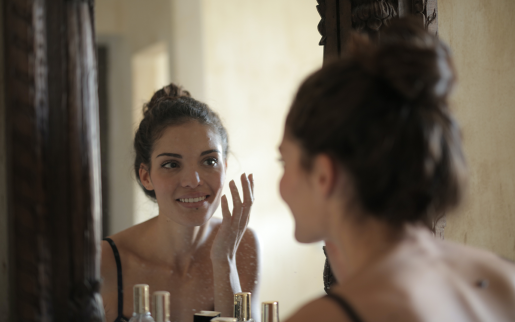Skincare 107: Sunspots
This is the seventh in an ongoing series on caring for your skin.
A solar lentigo, otherwise commonly known as a “sunspot” or “age spot,” is a red, tan or brown flat lesion that develops due to cumulative sun exposure over one’s lifetime. These spots are common among people over the age of 40. Dr. Zeena Nawas, assistant professor of dermatology at Baylor College of Medicine, and Baylor dermatology resident Dr. Joan Fernandez give insight into these fickle spots.
 How do sunspots form?
How do sunspots form?
Sunspots result from cumulative sun exposure over one’s lifetime and are due to activation of the pigment-producing cells in the skin with subsequent pigment deposition, leaving a patient with a dark spot. Studies have shown that more than 90% of lighter-skinned patients over the age of 50 have at least one of these lesions. These spots can be seen on sun-exposed areas including the face, arms and hands. The incidence of these spots increases with age and can affect patients of all skin types.
How can I prevent sunspots from forming?
Protection from an early age is key. We recommend the use of broad spectrum, SPF 30 or higher sunscreen applied daily 15-30 minutes prior to sun exposure. When purchasing sunscreen, we recommend looking for those that contain physical blockers, either zinc oxide or titanium dioxide, as these provide a physical blockade against both UVA and UVB light. Tinted sunscreens, which contain the ingredient iron oxide, can further protect against visible light. In addition to sunscreens, other sun protective agents, including wide-brimmed hats and UPF clothing, can provide patients with additional protection. Sunscreen needs to be reapplied every two hours for continued efficacy. Additionally, we recommend avoiding direct sun exposure during UV peak hours, which tend to be from 10 a.m. to 4 p.m.
I have sunspots! How can I “treat” them?
Commonly employed treatments for sunspots can be found over the counter and in a clinical setting. Regardless of which treatment you chose, we recommend individuals meet with their dermatologists to determine which treatment modality, or combination of modalities, is most appropriate for their skin type.
Over the counter: Topical retinoids (retinols and over-the-counter adapalene) and lightening agents (hydroquinone, azelaic acid, kojic acid) can help to improve the appearance of sunspots. Topical retinoids increase collagen production and skin cell turnover and promote skin peeling, bringing new cells to the skin surface. It is important to keep in mind that these over-the-counter topical medications are unlikely to lead to complete clearance of sunspots and that these agents may lead to side effects, including skin irritation and unwanted lightening of surrounding skin.
Clinical: Commonly employed treatments for sunspots include topical therapies with prescription tretinoin as well as in-office therapies including cryotherapy, laser resurfacing technology, chemical peels and electrodessication.
What exactly happens when I “treat” my sunspot?
The therapies used to treat sunspots target either the pigment-producing cell (melanocyte) itself to decrease the pigment (melanin) production, or target and eliminate the pigment directly. Due to the unique risks and benefits of the various treatment options, we recommend seeing your dermatologist to determine the best plan of action.
How can I tell if this is a sunspot or something bad?
Sunspots and skin cancer can be difficult to differentiate. We advise our patients to be aware of the ABCDEs: asymmetry, border irregularity, color variegation, diameter (greater than 6mm) and evolution.
If a spot exhibits any of these features, we recommend visiting a board-certified dermatologist for further evaluation to ensure that the lesion is not concerning for a more serious skin cancer.
Any time you notice a lesion that is different in appearance to other spots on your body or is new or changing, we recommend bringing this to the attention of your dermatologist for further assessment.
By Aaron Nieto



